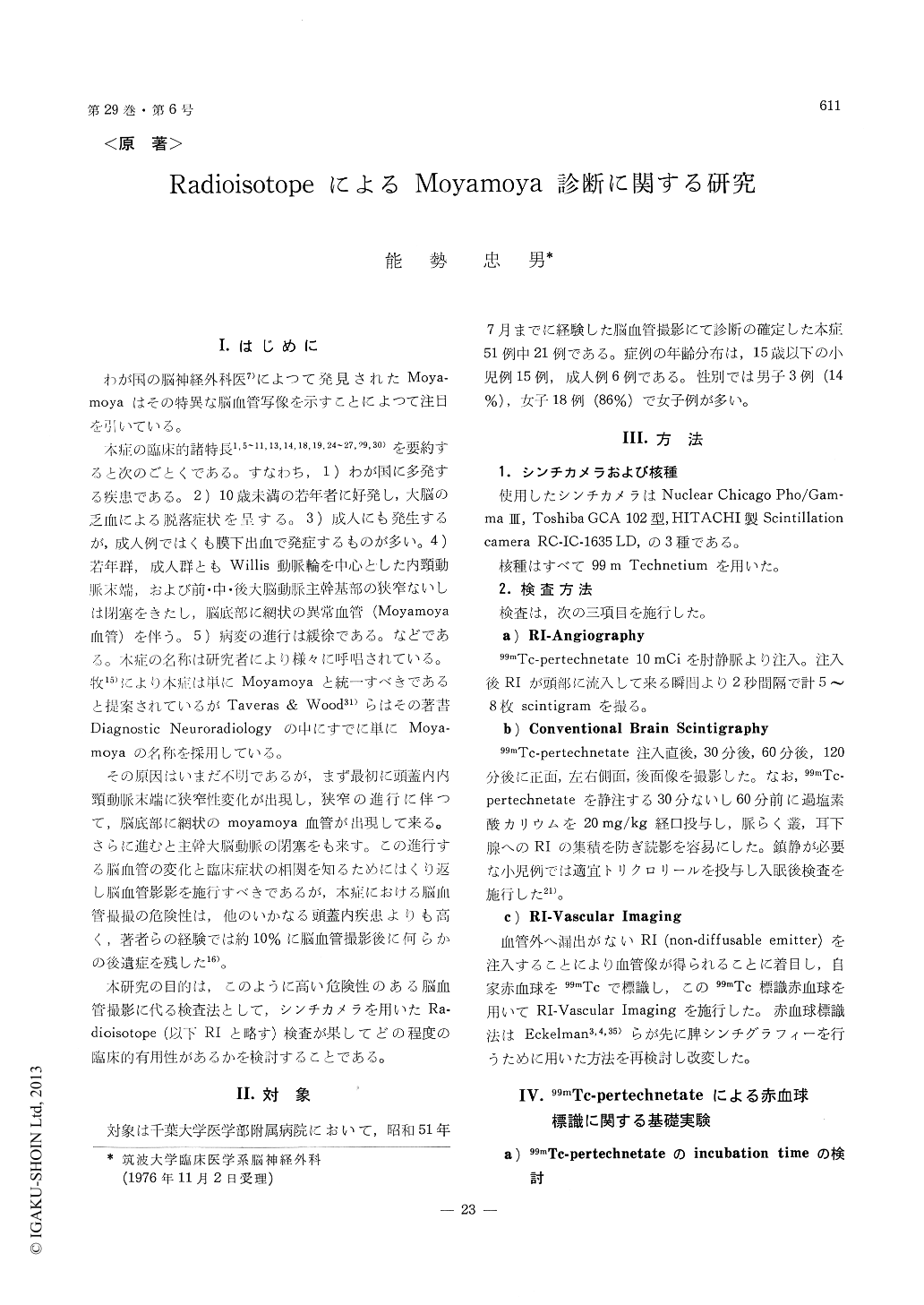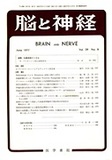Japanese
English
- 有料閲覧
- Abstract 文献概要
- 1ページ目 Look Inside
I.はじめに
わが国の脳神経外科医7)によつて発見されたMoya—moyaはその特異な脳血管写像を示すことによつて注目を引いている。
本症の臨床的諸特長1,5〜11,13,14,18,19,24〜27,29,30を要約すると次のごとくである。すなわち,1)わが国に多発する疾患である。2)10歳未満の若年者に好発し,大脳の乏血による脱落症状を呈する。3)成人にも発生するが,成人例ではくも膜下出血で発症するものが多い。4)若年群,成人群ともWillis動脈輪を中心とした内頸動脈末端,および前・中・後大脳動脈主幹基部の狭窄ないしは閉塞をきたし,脳底部に網状の異常血管(Moyamoya血管)を伴う。5)病変の進行は緩徐である。などである。木症の名称は研究者により様々に呼唱されている。牧15)により本症は単にMoyamoyaと統一すべきであると提案されているがTaveras&Wood31)らはその著書Diagnostic Neuroradiologyの中にすでに単にMoya—moyaの名称を採用している。
Many cases of Moyamoya can be readily diagnosed clinically by repeated T. I. A. and various neuro-logical symptomes and signs. However, in some cases it advances to apoplexy or subarachnoid rhage.
Cerebral angiography is an only method for get-ting a definitive diagnosis. But we have experien-ced that the complications of this technique were more frequently in this disease than in any other intracranial disease, so repeated angiographies are not practical for follow up study for Moyamoya. The author, therefore, utilized radioisotopic studies (RI Angiography, Conventional Brain Scintigraphy and Tc-labeled red blood cell vascular imaging) in this disease.
The results were as follows :
1) RI angiography can indicate the occlusion of main trunk of cerebral vessels and the presence of moyamoya vessels. Conventional brain scintigram suggested the presence of infarction of the brain tissues. RI vascular imaging is essentially similar to cerebral angiography because a none-diff usable emitter is injected into the patient's blood vessels, giving less acurate findings than cerebral angio-graphy, but the cases with extensive moyamoya vessels and medullary veins can be visualized readily by this techniques.
2) RI angiography showed two different patterns. One pattern showed abnormal accumulation of RI activity at the midline base, suggesting the moyamoya vessels. The other pattern revealed the occulusion of the main cerebral arteries with a marked asymmetry between the bi-lateral hemis-pheres. Either pattern is recognized in 70% of this series (14/20 cases). Conventional brain scintigram gave abnormal findings in 25% of this series (5/20 cases), but RI vascular imaging showed abnomal findings in 89% of this series (17/19 cases).
It is concluded that the three methods of RI in-vestigations were capable of obtaining valuable informations regarding particular patterns of Moyamoya.
Thus, it is considered that RI investigation is very effective diagnostic procedure without any occurence of risky.
3) The standerdized method for red bood cell labeling with Tc-99m is established by fundamental experiments.

Copyright © 1977, Igaku-Shoin Ltd. All rights reserved.


